My sincere thanks to Phil Ward, editor of Auto Italia,
for his kind permission to reproduce part of the article and some of the photos that first
appeared in the April 1999 issue of this excellent magazine. |
|
|
|
|
|
|
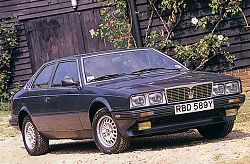 |
BITURBO Produced from 1982 to 1985. Made in left-hand drive and,
for the UK, in right-hand drive by special order only. The 2-litre twin cam engine with 3-valves per cylinder
produced 182bhp and the car sported 5.5" alloy wheels. The engine
was fitted with two IHI turbochargers feeding a single Weber carburettor
sealed in a plenum chamber. This model had no water-cooled turbos or MABC boost control. Note that the
original Biturbo Coupe had a rectangular plastic instrument pod and a digital clock. Available with leather or Missioni velour interior. 2-door bodywork only.
|
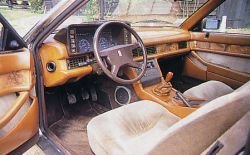 |
|
|
|
|
|
|
|
BITURBO 425 Produced from 1986 to 1989. In reality
a four-door Coupe, but with a longer wheelbase and a slightly raised roof-line for the rear
passengers. Same engine with MABC boost control, 6.5J rims and the added option of cloth interior. First model
with full central locking. Early models with optional power steering and a smaller thermostat housing.
|
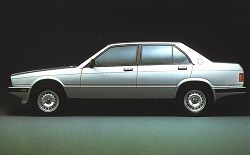 |
|
|
|
|
|
|
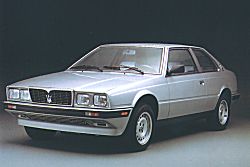 |
BITURBO COUPE Produced from 1986 to 1989. It's the one
that everyone calls a 'Biturbo'. This model was the first to be imported into the UK in any quantity.
Power steering with the elliptical fascia and the Lassale clock. Cam covers painted in crackle black
and the car was available with an automatic gearbox. Different 6J wheels from the original Biturbo and along with
the 425, the first car to use the 2.5-litre 3-valve twin-cam engine producing 192bhp.
|
|
|
|
|
|
|
|
SPYDER The first convertible
model. Prototype by EMBO seen at the Turin show back in 1982. Shorter wheelbase than the Coupe,
so there were three different chassis in production at once. No proper rear seats but removable
cushions made it a 2 + 2. Leather upholstery only. The car shown here has 425 wheels.
|
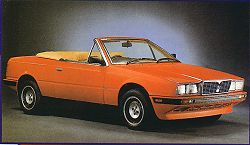 |
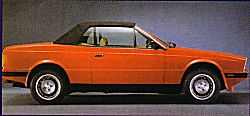 |
|
|
|
|
|
|
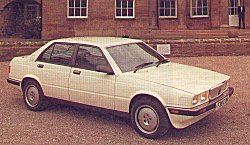 |
BITURBO 430 A four door saloon
based on the 425 body. Same mechanics as the 222E but with more luxury touches such as electric
driver's seat. The front grille now had a sportier look. The twin exhaust now replaced with
four tail pipes. Engine capacity up to 2790cc.
|
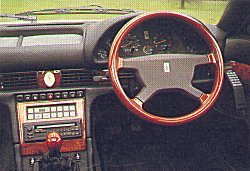 |
|
|
|
|
|
|
|
BITURBO 222E Produced from 1989 to 1991. This was a
two-door utilising the 2.8-litre 3-valve twin cam engine for the first time. Intercoolers were
standard. This unit came with red crackled cam covers and produced 245bhp with the all
new Weber Marelli injection and ignition system. It had lowered uprated suspension and now used
7J five-studded wheels. Touch sensitive air condition controls (see 430), a new look front end and four
tailpipe exhaust standardised.
|
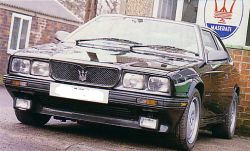 |
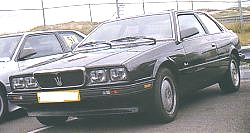 |
|
|
|
|
|
|
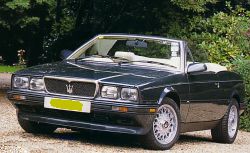 |
SPYDER E Same
generation as the 430 and 222E. An uprated Biturbo Spyder with 222E 2.8 power unit and 7J
wheels which were slightly different to closed cars.
|
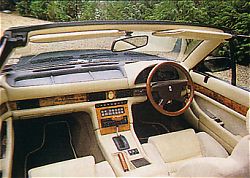 |
|
|
|
|
|
|
|
KARIF The Karif was in fact a Spyder E with a fixed
hardtop and a better interior. This is a much underrated car with superb performance from
its engine which delivers power outputs from 224 bhp to 286 bhp depending on specification.
Only a few examples of this model were made so potentially a good investment?
|
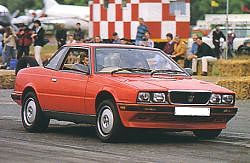 |
|
|
|
|
|
|
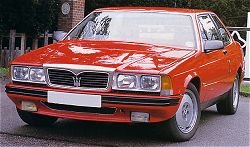 |
BITURBO 228 And now something
completely different! The 228 was in production between 1989 and 1991. At first glance it is
similar to a 222E but is in fact a larger car all round. No shared panels. Lights and fittings
are unique. Still with a 2.8-litre unit, it was intended to be the flagship of the range -
an attempt to poach the Mercedes S customers. About 30 cars were imported into the UK.
|
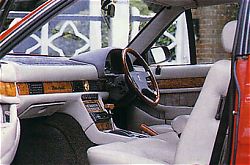 |
|
|
|
|
|
|
|
THE BITURBO SE The SE produced from
1991 to 1993. The establishment of Meridien Maserati coincided with a facelift across the
range and the first new imports by the company were the 'SE' version as they were called -
the 222SE, 430SE, Spyder SE and the Karif SE. These cars were identical to their predecessors
except for a few bodywork changes such as exhausts exiting through the rear bumper and additional
fog-lamps and side skirts.
|
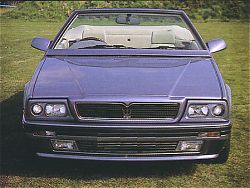 |
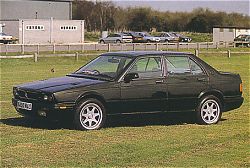 |
|
|
|
|
|
|
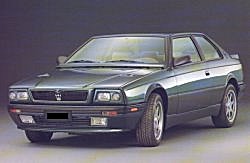 |
222 4V, 430 4V
and SPYDERAll
change again. New engine developed with 4-valve heads and four camshafts, but still 2.8-litres.
Power up to 250bhp. Face-lifted front identical on all three models but the factory decided
that the short wheelbase Spyder chassis could not handle the extra power from the new engine,
so it retained the 3-valve motor and power dropped to 225bhp.
|
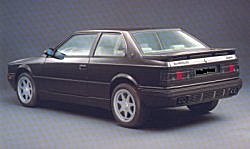 |
|
|
|
|
|
|
|
These versions were the first to have catalysts and the
spare wheels were replaced with a can of foam. A differential oil cooler was fitted and a
new gearbox replaced the dogleg first with a normal pattern. Maybe 10 of each were sold in
the UK. Confusingly 'SR' versions of the two and four door cars were also available concurrently
using the 3-valve Spyder motor but all the other 4v updates. The Karif was dropped from the range.
|
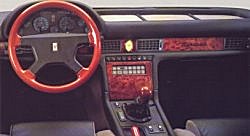 |
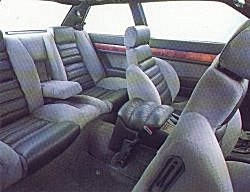 |
|
|
|
|
|
|
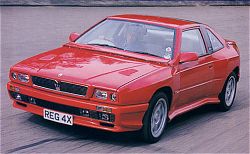 |
THE SHAMAL
Produced from 1992 to 1995. The first sign that the Biturbo era was moving on. A new engine
now with a V8 configuration, with 4-valves, 4-cams producing 325bhp @ 6000 rpm and 320 lb ft
@ 2800 rpm. Widened front wings, new headlights and different rear end treatment.
New 6-speed gearbox and rear suspension.
|
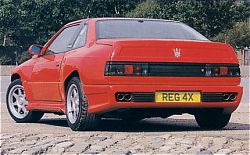 |
|
|
|
|
|
|
|
THE GHIBLI II
First appeared here in 1994 and will be withdrawn when the 3200GT comes on
stream. Last of the Biturbo concept utilising a V6 engine in 2.8-litre, 4-valve 4-cam
configuration and with 286bhp. Later versions fitted with Getrag six speed gearbox and
'Ranger®' differential.
Similar widened front bodywork to the Shamal. Minor changes to the interior and different
'Merak' style wheels. Fully adjustable suspension by Koni/Maserati as standard and in 1994
available with ABS brakes - at last! 1995 saw the addition of the Ferrari ' Ranger® ' differential
and the Getrag 6 speed gearbox, already in use on the Italian 2-litre car. There were modifications
to the suspension (new shocks, springs and roll bars) and a 'Connelly' leather interior.
In 1996 a Ghibli GT appeared with new 7 - spoke alloys and driver's air-bag. The last Maserati to be endowed with 'that clock'.
|
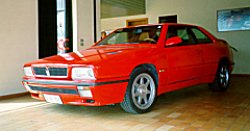 |
| The Ghibli II series I
|
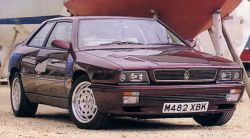 |
| The Ghibli II series II
|
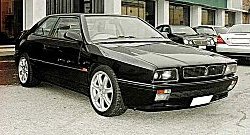 |
| The Ghibli GT
|
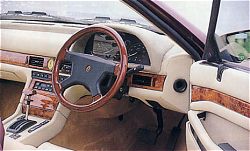 |
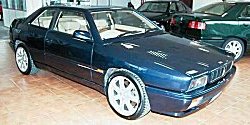 A GT - note the change in wheel design
A GT - note the change in wheel design |
|
|
|
|
|
|
|
GHIBLI CUP
The "heart" of the Ghibli Cup is a 2-litre V6 engine producing a massive
330 bhp. The car was introduced in limited production for the Ghibli 'Open' Cup race series
which unfortunately lasted only two seasons. The cars produced for the road had a "racey
interior" which included Momo 'Corsa' steering wheel, alloy gear lever knob, alloy pedals
and carbon-fibre panels in place of the standard briar. Externally it had an alloy fuel cap
and 'Ghibli Cup' badges on each door, Speedline 'Allesio' 3 piece alloys and two large bore
exhaust pipes in place of the usual four. Brakes were uprated with grey enamelled four pot
calipers bearing the name 'Maserati' on the front brakes. Suspension was uprated for track
use. A few hybrids were produced with all these 'Cup' modifications but with the 2.8-litre
engine producing 286 bhp.
|
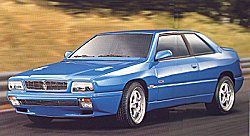 |
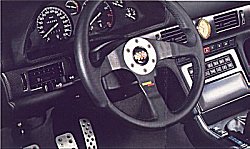 |
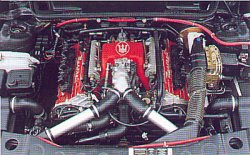 |